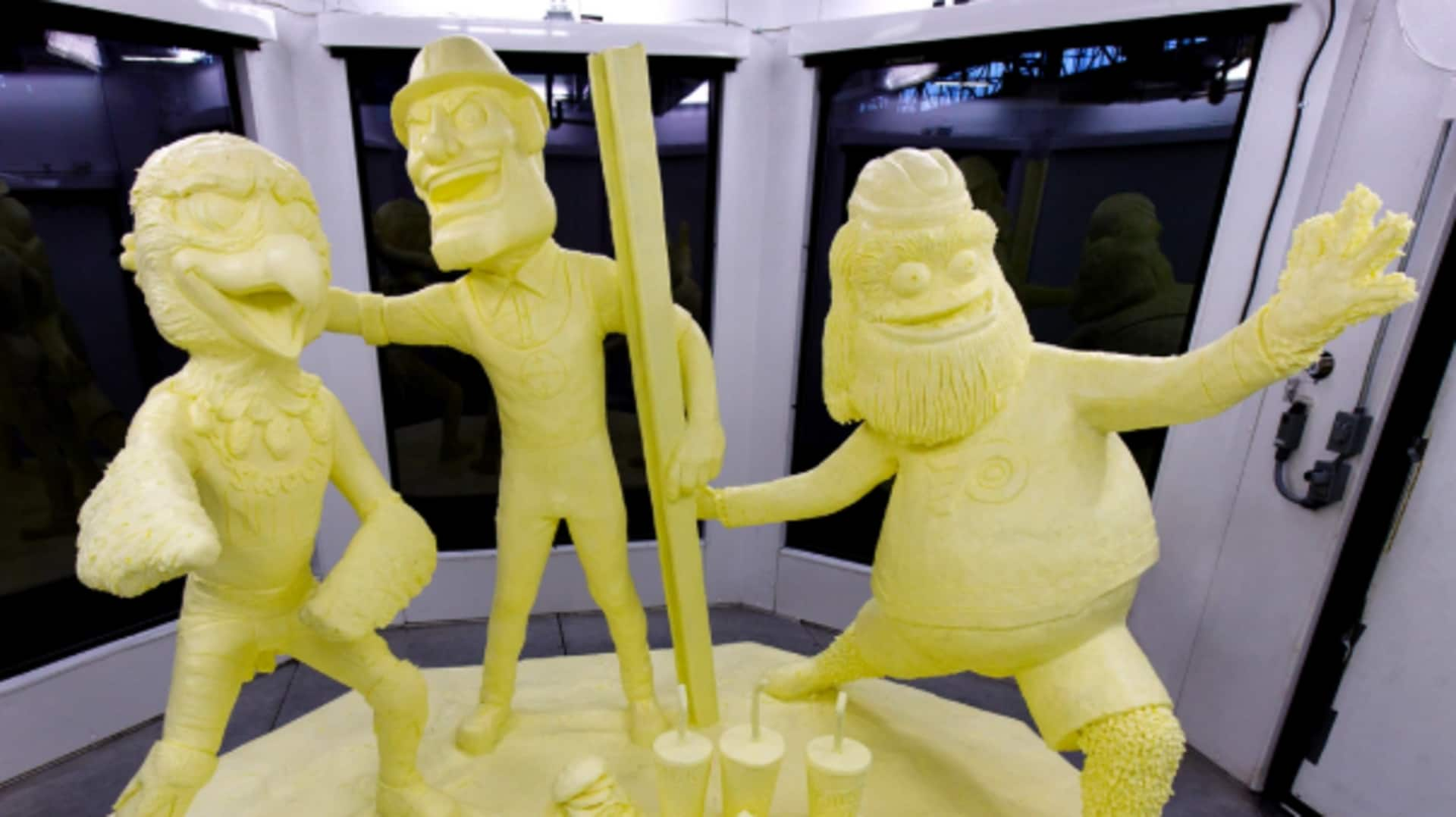
Churned to perfection: The art of butter sculpture
What's the story
Butter sculpture, the art of creating figures from butter, dates back to ancient Tibetan Buddhist rituals.
It has since spread to various cultures worldwide, most notably at U.S. state fairs.
From blocks of butter, artists carve intricate sculptures ranging from animals to historical figures, showcasing both creativity and technical skill.
This tradition celebrates agricultural abundance and craftsmanship in dairy states, and is a unique form of folk art.
History
The origins and cultural significance
The tradition of butter sculpture originated in Tibetan Buddhism for religious rituals, eventually spreading to Mongolia, China, Europe, and America.
By the 19th century, U.S. dairy states exhibited butter sculptures at state fairs as symbols of agricultural abundance and artisanal skill.
Today, these sculptures are a cherished form of folk art, embodying cultural heritage and artistic creativity.
Craftsmanship
Materials and techniques used
Artists use pounds of unsalted butter (it's more pliable) to create butter sculptures.
They work in frigid temperatures to keep the butter from melting, and start with sketches, just like traditional sculptors.
Then, they use knives, wires, and even dental tools for intricate details. It can take anywhere from a few hours to several days, depending on the complexity.
Masterpieces
Famous butter sculptures around the world
One prominent example is Norma "Duffy" Lyon's life-sized cow sculptures at the Iowa State Fair, which solidified her iconic status as "The Butter Cow Lady."
Another key piece is Caroline Shawk Brooks' Dreaming Iolanthe, which premiered at the 1876 Centennial Exposition in Philadelphia.
These pieces not only showcase immense talent but also illustrate the unexpected beauty butter can hold as a medium for art.
Getting started
Tips for aspiring butter sculptors
If you're feeling inspired to try butter sculpting yourself, experts recommend starting small.
Try making basic shapes or small animals, using everyday kitchen utensils as tools.
Keep your workspace cool so the butter stays firm, and remember, it's all about practice.
Once you've mastered the small stuff, you can move on to your dream of sculpting a life-size replica of your cat!